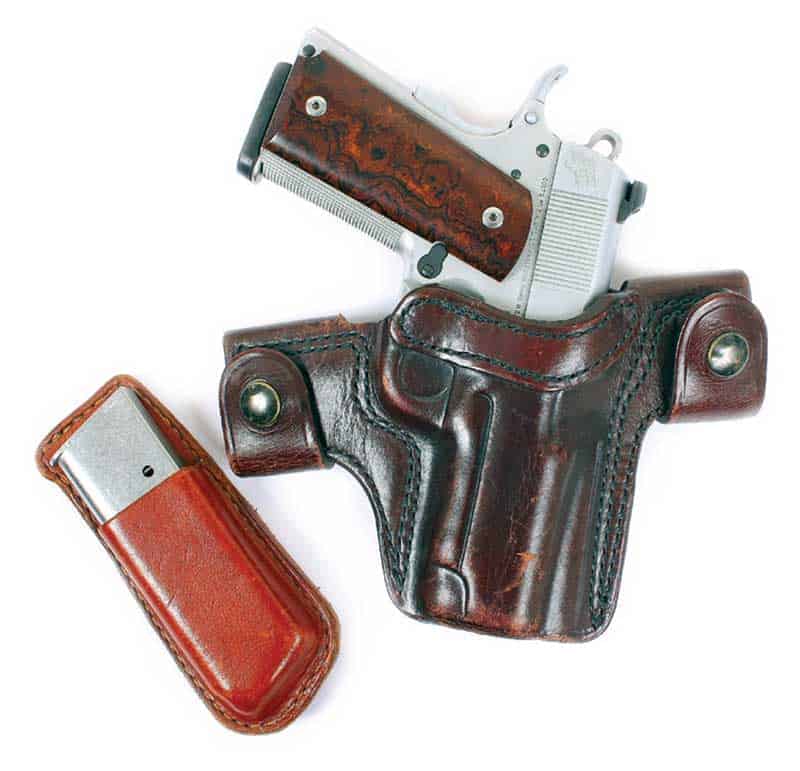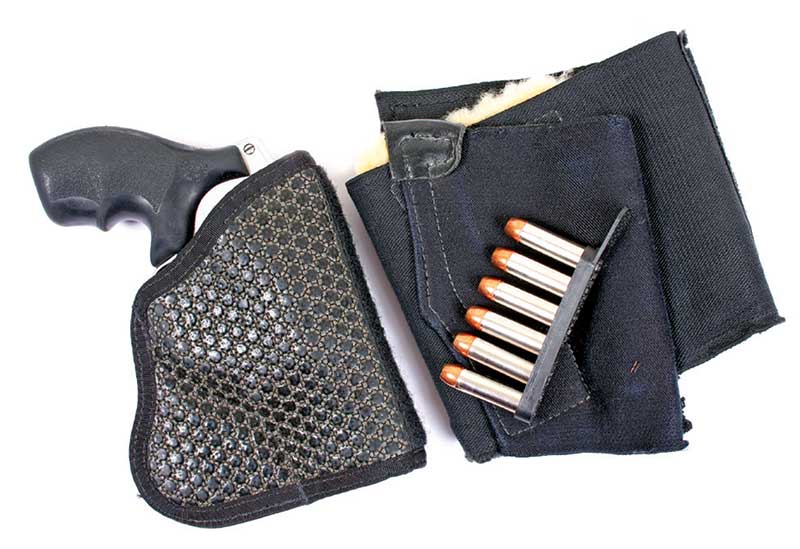Holster Hints
If there was ever something getting over thought it’s holster selection. I did the Carry Options column in Handgunner for years (used to be called Handgun Leather then) and during that time saw hundreds of holsters of every make, model, design, ilk, trend or attempt. Some were elegantly designed, and didn’t work worth beans. Others were crudely constructed, but worked great. But after nearly 40 years of carrying all kinds of guns, including duty cop guns, backup guns, off-duty guns, hunting guns and all the rest, I noticed some trends to watch for. I actually got so frustrated during my cop days I took to making my own holsters.
After a while, I sort of drummed-up a list of things to keep in mind when holster shopping. Let’s call it the Handgunner Holster Hit List, a short compendium of must-haves when it comes to holsters, covering design, construction, materials and comfort. To wit:
“Lightweight is paramount, with no compromise in quality of construction, craftsmanship, materials or design. A minimalist approach is always worthy, and with holsters, less is often really more. It must fit securely on the belt, ankle, etc., yet be easily removed. There’s no need for retention straps if proper fi t is estab-lished. Comfort is critical, because you won’t tolerate an uncomfortable holster. No holster can be all things to all people.”
Impossible?
Not at all. One of the icons of holster makers is Thad Rybka. Thad’s work is always almost severely minimalist, perfectly constructed of the best materials and without a single feature or design element not needed for the job. And there are others out there. Think Alessi, Milt Sparks, Haugen, 5-Shot, Crossbreed, Ken Null and others. With the factory guys you have to shop their line carefully, but companies like Galco, DeSantis, Safariland, BLACKHAWK!, Blade-Tech and many of the synthetic holster makers get it right.
And while there are many factory or custom makers we didn’t name, if you keep our little list in mind when you shop, you’ll find plenty of good quality out there. I get mail virtually every day from readers asking what holster they need to buy for their gun — and I can’t answer them. What works for me may not work for them.
But, there are standards you can look for that will likely work. First off, regardless of your gun, if it’s for self-defense, training, or field carry, a good “scabbard-type” holster is the anchor of your holster box. The Ken Null and G-Code (in Kydex) pictured are typical of the breed. Vertical cant, strong-side, simply designed and no muss or fuss. Use ‘em on the range, in the fi eld or even as your CCW holster under a light cover.
Next up, a good quality “snap-on/snap-off” rig like this one by Alessi. They are comfy, secure, can be easily concealed even under a shirt, and are a breeze to put on and off. A single-mag pouch is always a good idea.
An ankle rig and good pocket holster are also good ideas. The pocket rig is by DeSantis and I like the fact it’s “sticky” on the outside so stays in the pocket when you draw. The ankle rig is by Renegade and is the style I’ve worn since the early 1980s during my police career, and still do today. They wear out in about a year, but are secure and comfortable in the extreme.
And don’t rule out a cross-draw rig. This is one of my own design called the “The Wedge” as sold by Haugen. It has a wedge-shaped insert riding behind the slide, pushing the butt into the torso, offering more concealment. But there are other good styles out there. A cross-draw is great for driving, can be drawn easily with either hand and is perfectly safe when concealed. It’s fast too.
Other Ideas
We’ve talked about what seems to work for most people. There are shoulder holsters (often uncomfortable and you can’t take your coat off), inside the waistband holsters (some find them comfortable, but many people simply can’t abide by them), and other odd designs. Stay away from the “small of the back” designs because if you fall onto your back with a hunk of gun at your lower back you can hurt yourself — badly. Sorry if you make one, but I know people who have hurt themselves.
The basic designs listed will accommodate the majority of your concealed carry or range use needs and will fit virtually everybody. Just don’t try to get technology to fix a problem that’s more training-related; or think more snaps, buckles and widgets are a good idea. I’ll bet your most comfy shoes are your basic bedroom slippers. Use that same thinking when it comes to your holsters. And — it really doesn’t matter if it’s leather or synthetic. If it meets the standards we’ve discussed, it’s probably good to go.








